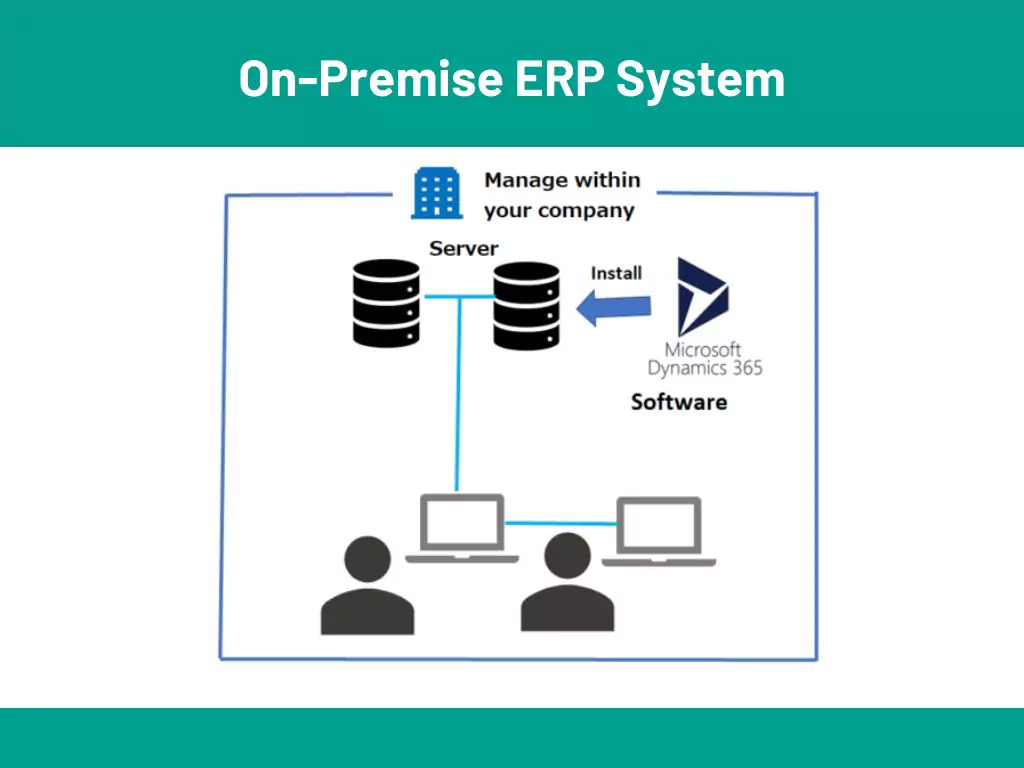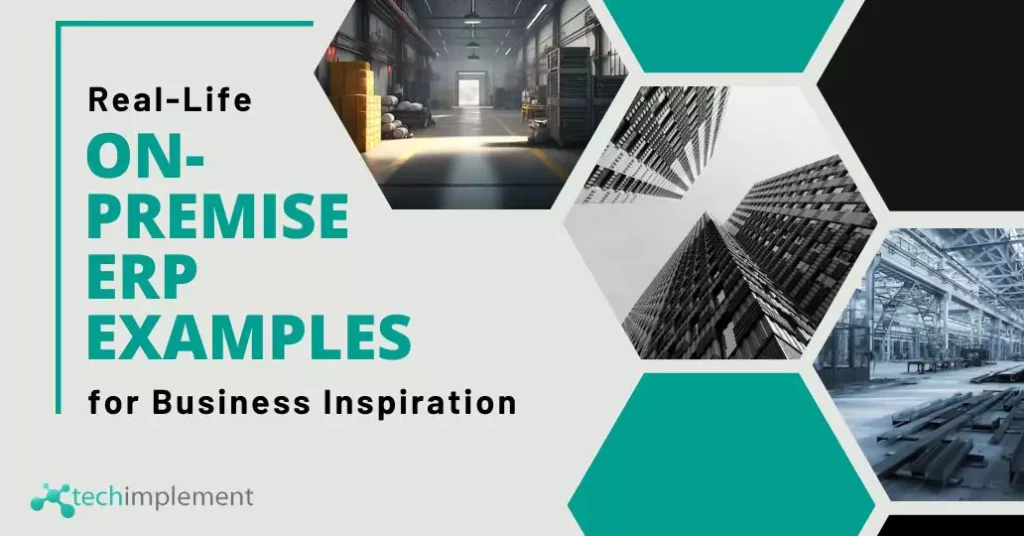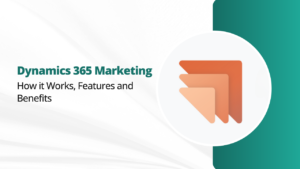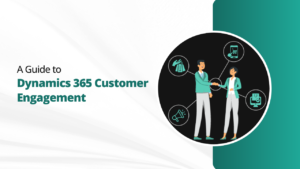ERP systems have become a cornerstone of modern business operations. It regulates processes, enhances data management, and improves decision-making. While cloud-based ERP solutions have gained popularity in recent years, on-premise ERP systems still hold their ground. It offers a range of benefits for businesses that are important for their success. In this blog, we will explore real-life on-premise ERP examples to provide businesses with inspiration and insights into how these systems can drive success.
ERP Systems: The Foundation of Business Efficiency
An ERP system acts as a central hub for managing various business processes. By facilitating data flow between different departments, these systems enhance operational efficiency. In a world driven by data, ERP systems ensure that accurate information is available in real-time.
Real-time access to accurate data is crucial for informed decision-making
ERP systems provide executives and managers with the information they need to respond. Informed decision-making is a keystone of business success, and ERP systems play a pivotal role in this process.
ERP systems have come a long way since their inception.
While cloud-based ERP solutions are quite popular for their scalability and accessibility. On-premise ERP systems still have a significant role to play, especially in businesses with a focus on data security and control. On-premise solutions offer greater customizability, making them an attractive choice for many enterprises.
Unique Advantages of On-Premise ERP

On-premise ERP systems offer unique advantages that should not be overlooked. One of the most compelling benefits is the level of control they provide over data. On-premise solutions can be customized to meet a business’s precise requirements. This makes them an ideal choice for companies with specific operational needs.
Selecting the right ERP solution is not a one-size-fits-all decision. Businesses need to carefully evaluate their needs, goals, and constraints. The choice between on-premise and cloud-based ERP depends on various factors. It includes the nature of the business, security requirements, and budget considerations. Taking the time to assess these factors is essential to making an informed decision.
Real-Life On-Premise ERP Examples
Real-life on-premise ERP examples serve as valuable benchmarks for best practices. Industry leaders have paved the way with their successful ERP strategies. Their experiences can offer crucial insights for businesses seeking inspiration.
Studying these on-premises ERP examples can inspire businesses to think creatively. They can learn to use their ERP systems for operational excellence. The versatility of on-premise ERP systems is showcased through challenges that businesses address. From supply chain management to complex manufacturing processes, these examples highlight the innovative potential of on-premise solutions.
1. Ford Motor Company
One of the most iconic examples of an on-premise ERP system’s success is the Ford Motor Company. Ford has been using an on-premise ERP system for several decades. The system has enabled them to integrate their entire manufacturing process. It includes from production and supply chain management to sales and customer service. By having full control over their ERP system on-site, Ford can adapt it to their unique needs and maintain strict data security.
Key Takeaways:
- On-premise ERP offers customization to cater to specific business requirements.
- Enhanced security and data control are significant advantages.
2. Procter & Gamble
Procter & Gamble, a multinational consumer goods corporation, relies on an on-premise ERP system. It manages its vast array of products and supply chain operations with the use of ERP. The company’s ERP system allows them to coordinate production, inventory, and distribution. This results in better cost management and streamlined operations across many global locations.
Key Takeaways:
- On-premise ERP systems can handle complex supply chain operations.
- They enable multinational corporations to maintain global consistency.
3. Komatsu America Corp.
Komatsu America Corp., a leading manufacturer of construction and mining equipment, is another prime example of successful on-premise ERP implementation. They use an ERP system that manages every aspect of their business. The system enables them to maintain control over their data and operations. It also ensures they meet the unique needs of their industry.
Key Takeaways:
- On-premise ERP solutions are suitable for manufacturing-intensive industries.
- They provide control and flexibility to adapt to specific industry requirements.
4. Lockheed Martin
Lockheed Martin, a global aerospace and defense technology company, utilizes an on-premise ERP system to manage its complex and sensitive operations. With strict security regulations in the defense industry, Lockheed Martin’s ERP system ensures data integrity and compliance. It also optimizes production and supply chain processes.
Key Takeaways:
- On-premise ERP systems are ideal for industries with stringent security and compliance requirements.
- They can handle the complexities of large-scale aerospace and defense operations.
5. Caterpillar Inc.
Caterpillar Inc., a renowned manufacturer of construction and mining equipment, relies on an on-premise ERP system to manage its intricate operations. Their ERP system integrates various departments, streamlining processes and facilitating real-time decision-making. This helps Caterpillar respond rapidly to market changes and customer demands.
Key Takeaways:
- On-premise ERP systems enable real-time data access and decision-making.
- They support rapid responsiveness to market dynamics.
6. Siemens AG
Siemens AG, a global technology company, employs an on-premise ERP system to manage its extensive product portfolio. The system assists Siemens in efficiently coordinating its manufacturing, distribution, and service operations. Siemens’ ERP system helps maintain its competitive edge with innovation and technological advancement,
Key Takeaways:
- On-premise ERP systems are adaptable to diversified business units.
- They aid in managing a wide range of products and services.
7. 3M
3M, a multinational conglomerate, utilizes an on-premise ERP system to manage its diverse product lines. The company’s ERP system allows for efficient supply chain management and inventory control. It ensures that 3M can meet customer demands promptly.
Key Takeaways:
- On-premise ERP systems support companies with extensive product diversity.
- They optimize supply chain and inventory management.
8. ExxonMobil
ExxonMobil, one of the world’s largest oil and gas companies, relies on an on-premise ERP system. The system helps in overseeing exploration, production, refining, and distribution. The highly regulated nature of the energy industry necessitates strict control over data, making on-premise ERP a crucial asset.
Key Takeaways:
- On-premise ERP systems are suitable for regulated industries like energy.
- They enable control over sensitive data and compliance.
Conclusion
These real-life on-premise ERP examples in act demonstrate their versatility and effectiveness across different industries. While cloud-based solutions have gained prominence, on-premise ERP systems continue to offer a competitive advantage for businesses with unique requirements, stringent security needs, or complex manufacturing processes.
On-premise ERP systems continue to serve as a reliable and versatile choice for businesses. They enable companies to maintain control over their operations. Through these real-life examples, businesses can continue their own journey toward ERP success.
Need help in ERP implementation? Contact us and we will make everything right for you!




